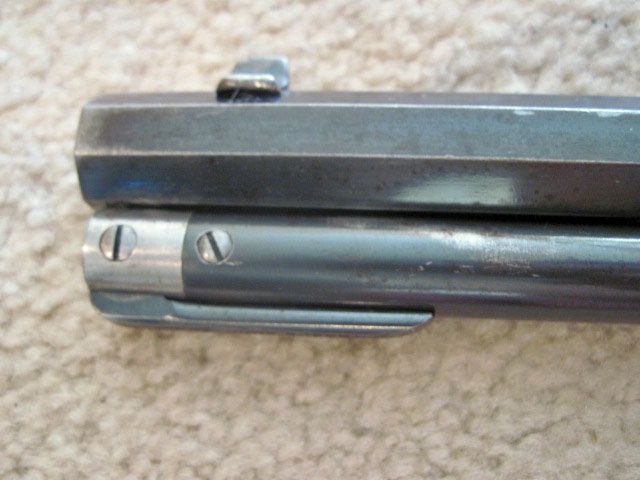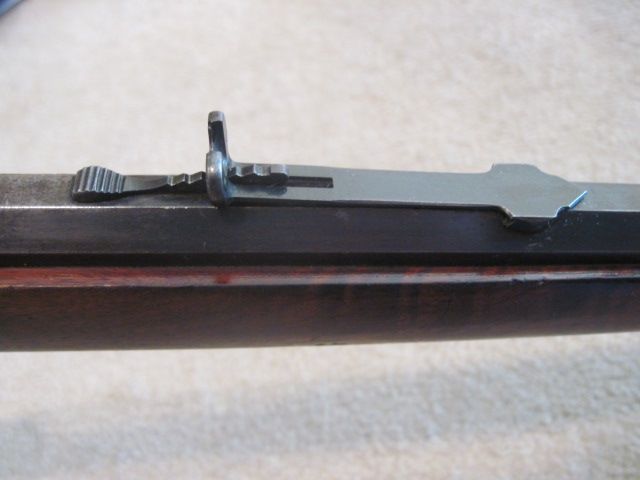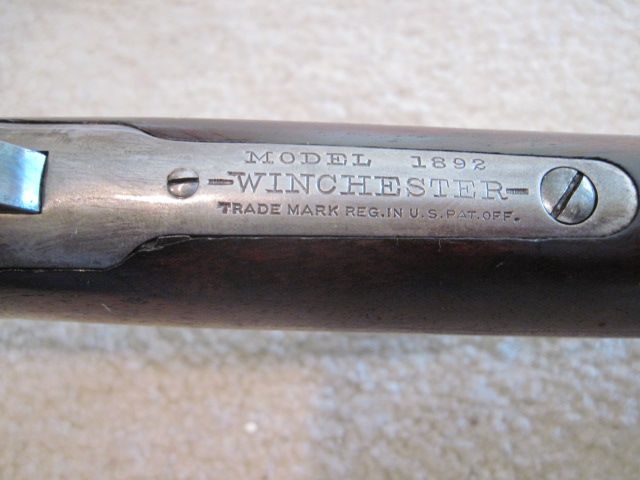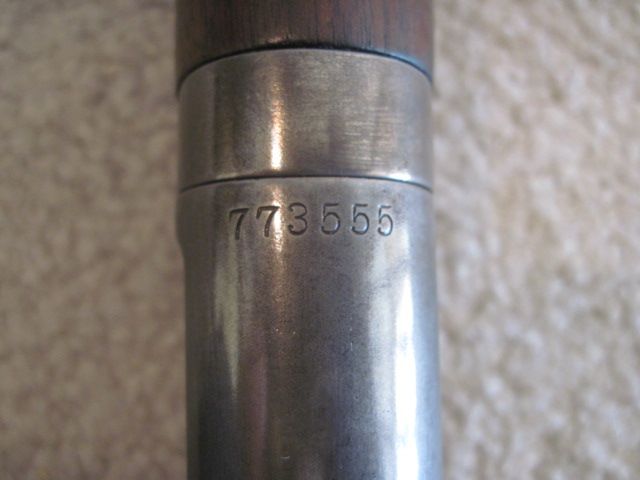July 17, 2012
 Offline
OfflineAs some of you may know I am a .22 rim fire enthusiast and while I do have a few lever action rifles I know less than squat about them. I recently acquired an 1892 take-down (made in 1914) and have a few questions for you fine folks.
1) The serial number (773555) is on the front of the receiver but not the front half of the take-down frame like I have seen on some Winchester take-down shotguns. Is it supposed to be in both places?
2) The receiver seems to be nearly in the white while the barrel and other components retain a fair amount of original blue. Is it possible the receiver and trimmings were case colored and just faded or has the bluing been removed? Is there a way to tell if it was originally cased? Haven’t taken it apart yet but will do so soon.
3) It is chambered in 25-20 (my first rifle in that caliber) and I am having a bit of a problem finding reloadable brass in quantity for it. Does anyone know of a source? It seems it is currently out of production. I am itching to shoot this thing!
Thanks for any/all responses and input as I am lever action ignorant and trying to learn.
Best Regards,
WACA Life Member #6284 - Specializing in Pre-64 Winchester .22 Rimfire
December 1, 2012
 Offline
OfflineThese are made periodically by the brass manufacturers. I had to wait a year or so for them to become available and then got several hundred a couple of years ago from Midway. They’ll appear again. Also, too pricey to buy loaded factory ammo and reload after shooting. That runs around $80 per 50.
![]()
"This is the West, sir. When the legend becomes fact, print the legend."
December 1, 2012
 Offline
OfflineIf you-re willing to overpay, here is some available now:
![]()
"This is the West, sir. When the legend becomes fact, print the legend."
April 23, 2012
 Offline
OfflineUnlikely C C (I dont think CC was even available shortly after the turn of the century) the Blueing just wore off the receiver more readily
Great model ,great caliber, fun to shoot no recoil yet still seems like a ‘real gun’ You can make brass easily from 32-20 ,or 218 Bee (218 Bee is really easy ) but searching around you should be able to locate 25-20 brass at some gunshop.
As the 25-20 was intended for jacketed and smokeless it is easy to load for, and get good accuracy without much work . the Speer 75 gr flat nose is an excellent bullet 4198 , 4227 are good powders
Phil

July 17, 2012
 Offline
OfflineThanks guys!
I knew I could form some from .32 WCF but didn’t know about the .218 bee, that is helpful. I will keep my eyes open for the next production run of 25-20 as I would like to get at least a few hundred cases with the correct 25-20 headstamp.
I think you are right about the C C, it just seemed odd to me that the bluing is gone everywhere on the receiver, even in the protected areas. Almost looks like it was deliberatly removed somehow. Regardless, it is a good solid, tight rifle and looks like it is going to be a LOT of fun to shoot.
Regards,
WACA Life Member #6284 - Specializing in Pre-64 Winchester .22 Rimfire
August 5, 2013
 Offline
OfflineTo answer your first question, the SN is right where it should be and appears in only one location on a Winchester 1892 so it’s righteous. Also, my experience with Winchesters is that it’s common for the receiver to lose its blue fast than the barrel or mag tube. I think it’s just a function of how people hold and store rifles. Most hands touch the receiver and not always the barrel. You have a solid, old rifle in a great caliber. And I really like the octagon bbl on the .25-20. The real shame is the lack of ammo as other members noted. Greg
May 2, 2009
 Offline
OfflineThe bluing loose has to do with a different types of bluing process used during that time. Mike Hunter did some research on bluings and the steel used and found it to be the bluing.
Bob
WACA Life Member--- NRA Life Member---- Cody Firearms member since 1991 Researching the Winchester 1873's

Email: [email protected]
January 26, 2011
 Offline
OfflineJWA
Great looking ’92. As others have stated, the condition looks totally normal to me. I have quite a few 1892s and 1894s with good blue on the barrel and tube, but just a trace of it on the receiver. In addition to extra carry wear, the receivers were harder steel and the blue didn’t set as deep (or so I’ve heard over the years). Its common to see the receiver, butt plate, and nose cap with less blue. Your rifle has some pretty wood on it as well, good find!
~Gary~

July 17, 2012
 Offline
OfflineThanks guys for all the info! I am glad it looks normal. I wiped it down with oil before the photos so the wood has some extra shine to it but it brought out the figure in the forend nicely.
I really appreciate the input and will let you know how it shoots. The bore is a bit dark but the rifling is sharp and strong. I am hoping the bore will clean up a bit more after shooting.
Again, thanks for the support and comments!
Regards,
WACA Life Member #6284 - Specializing in Pre-64 Winchester .22 Rimfire
April 23, 2012
 Offline
OfflineJWA
Ser # didnt click , but I had 773557 2#s up from yours . Chris just reminded me .This proves the benefit of adding your ser #’s to the surveys. the accumulated data helps up all. I wouldnt have thought of checking my ser # and appreciate knowing of the same configuration being manufactured in probable small batches when set up (so makes manufacturing sense)
Mine was also 25-20 TD OBR very nice wood .Mine was in nice cond , but also no receiver blue left. I owned it almost 40 years.
I dont trade much , but did a bundle trade with it included a couple years ago
Phil

1 Guest(s)


 Log In
Log In












